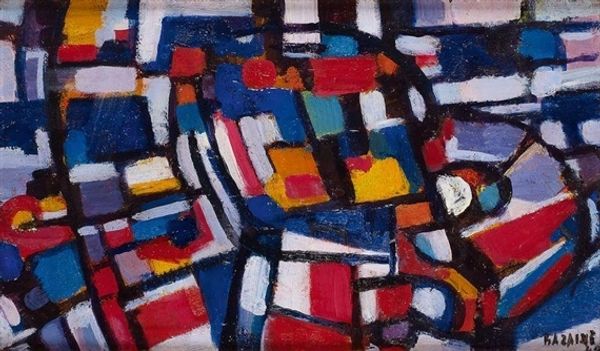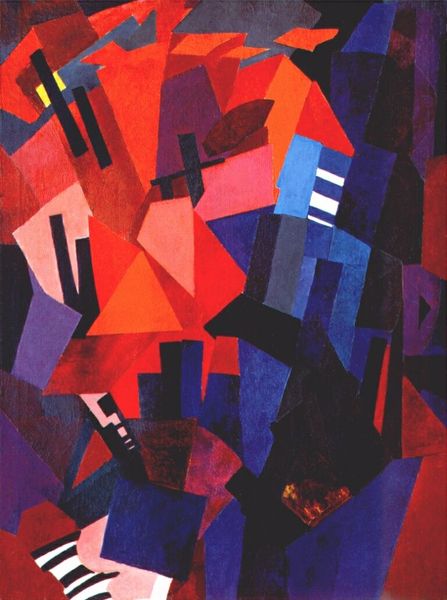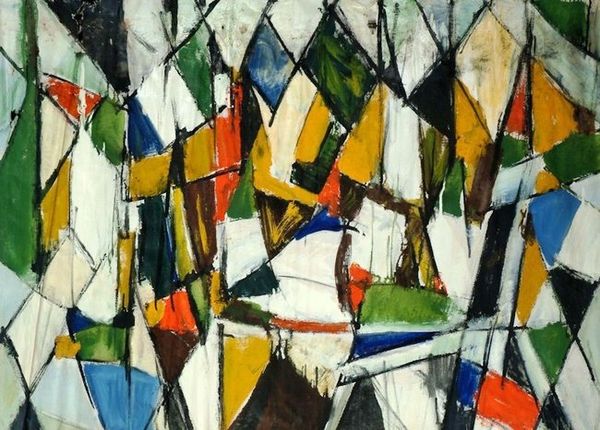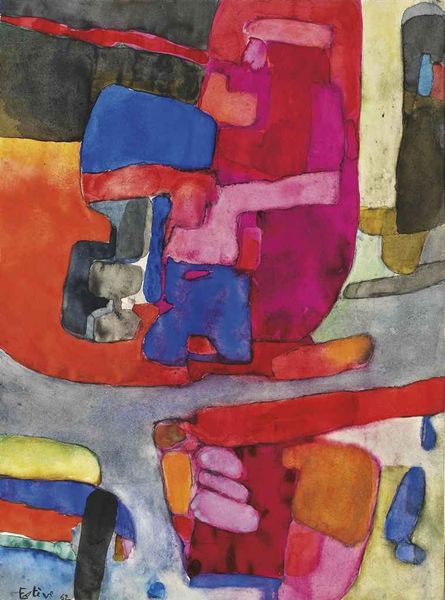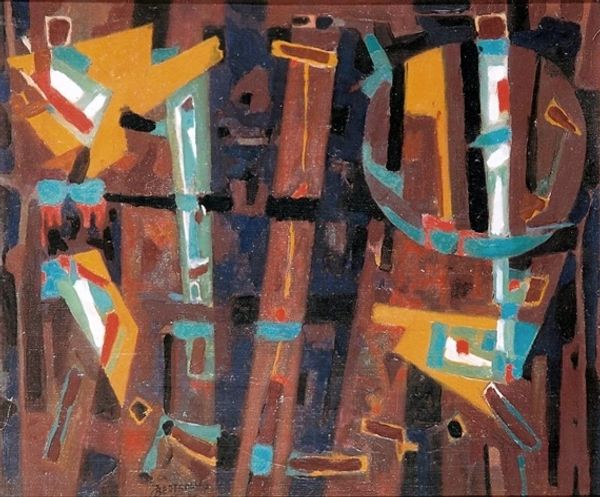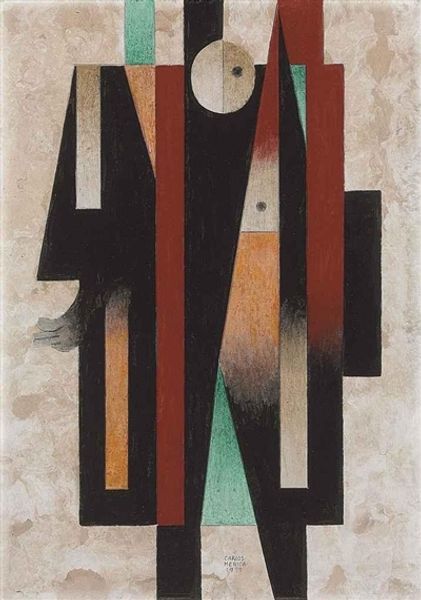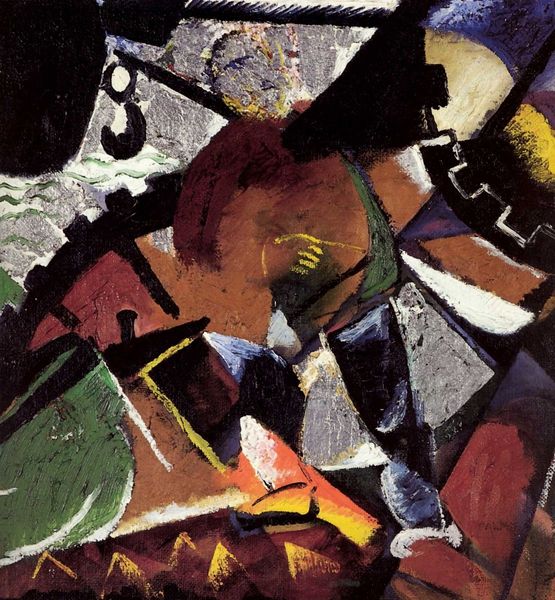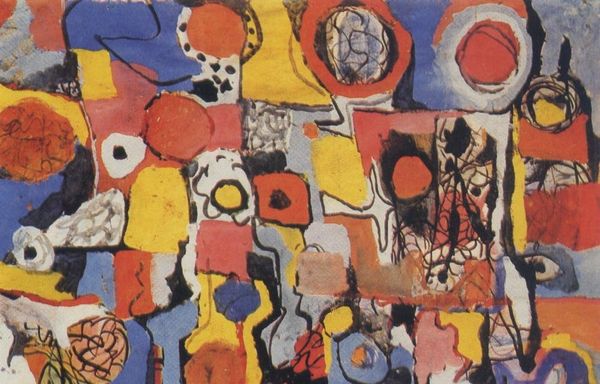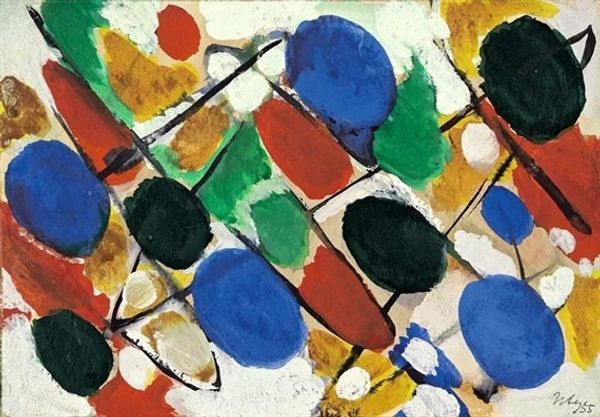
mixed-media, watercolor
#
cubism
#
mixed-media
#
german-expressionism
#
watercolor
#
expressionism
#
abstraction
#
line
#
mixed media
Copyright: Public domain
Curator: Immediately striking. The tension created by those imposing vertical bars, so rigid yet unevenly spaced... It’s restless. Editor: Indeed. We are looking at "Side Panels for 'Anatomy of Aphrodite'" a 1915 mixed media artwork by Paul Klee, a key figure in German Expressionism. Klee created it during a period of immense upheaval with World War I raging across Europe. Curator: That historical context really colors my understanding. The jarring colors and disjointed shapes then… they seem less abstract and more reflective of a world torn apart. It looks as though he embraced Expressionism, but he tempered that chaos, you know, it doesn’t erupt… it just throbs quietly in a state of unease. Editor: The technique Klee employs here is quite fascinating. The combination of watercolor and other media provides the surface with varied textures that contribute to its overall feel. Notice how the linear elements—those vertical stripes mostly—are rendered, a push-and-pull kind of game to create the perception of depth and form. It's about rhythm and movement of line. Curator: You pinpoint the core of Klee’s brilliance. The vertical structure could imply boundaries or perhaps even societal constructs collapsing around him during this tumultuous period. It makes me consider the position of artists, then, in that role, holding a mirror up to reflect the fractured psyche of an era defined by total war. The fragmented form itself challenges conventions that he saw, maybe a societal dismantling. Editor: Ultimately, though, while the artwork can be analyzed through various theoretical lenses, one must respect its inherent ambiguity and expressive capacity, and I also respect your analysis. Curator: It speaks to me about a specific, challenging moment, but it communicates using the timeless language of human suffering. Thank you. Editor: And I feel a sense of discovery about form through a turbulent experience; those combined observations complete the listening experience today.
Comments
No comments
Be the first to comment and join the conversation on the ultimate creative platform.
